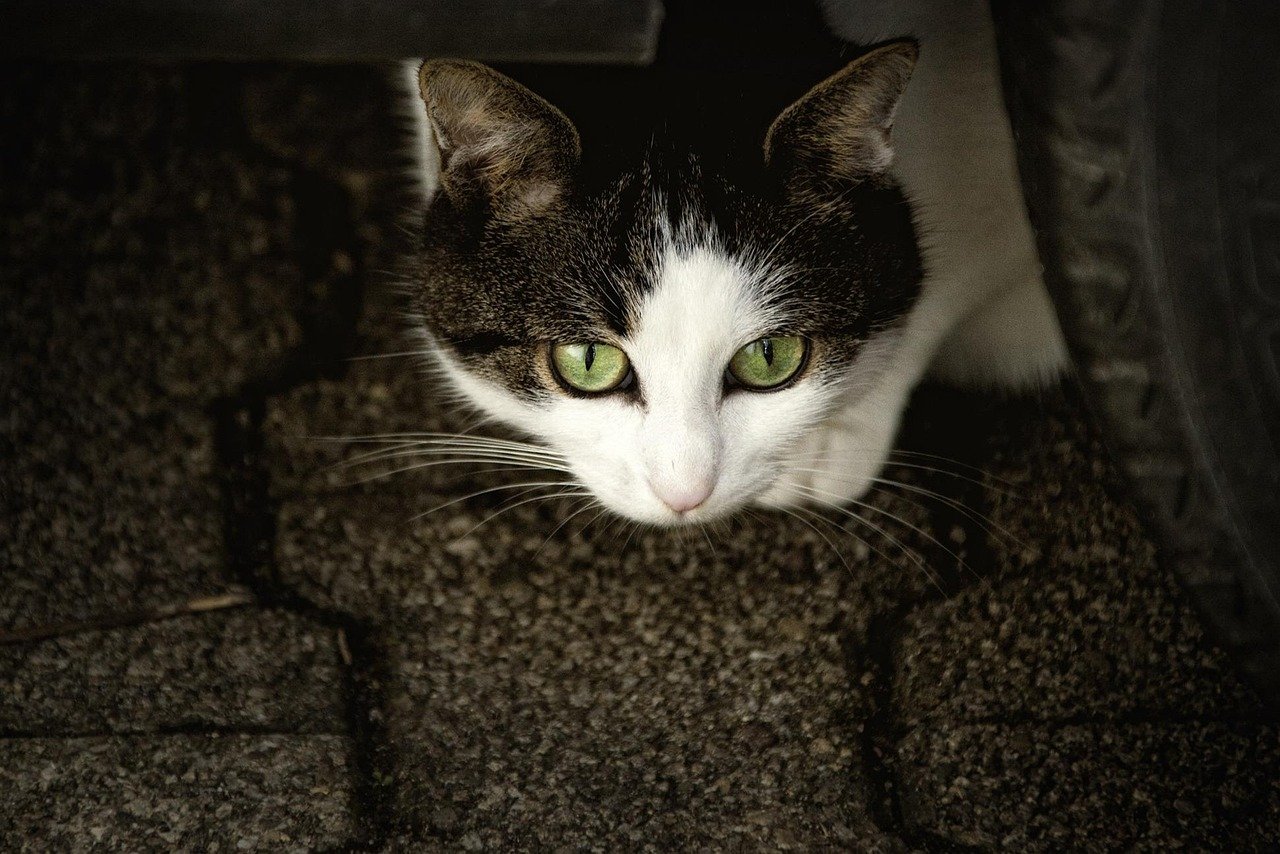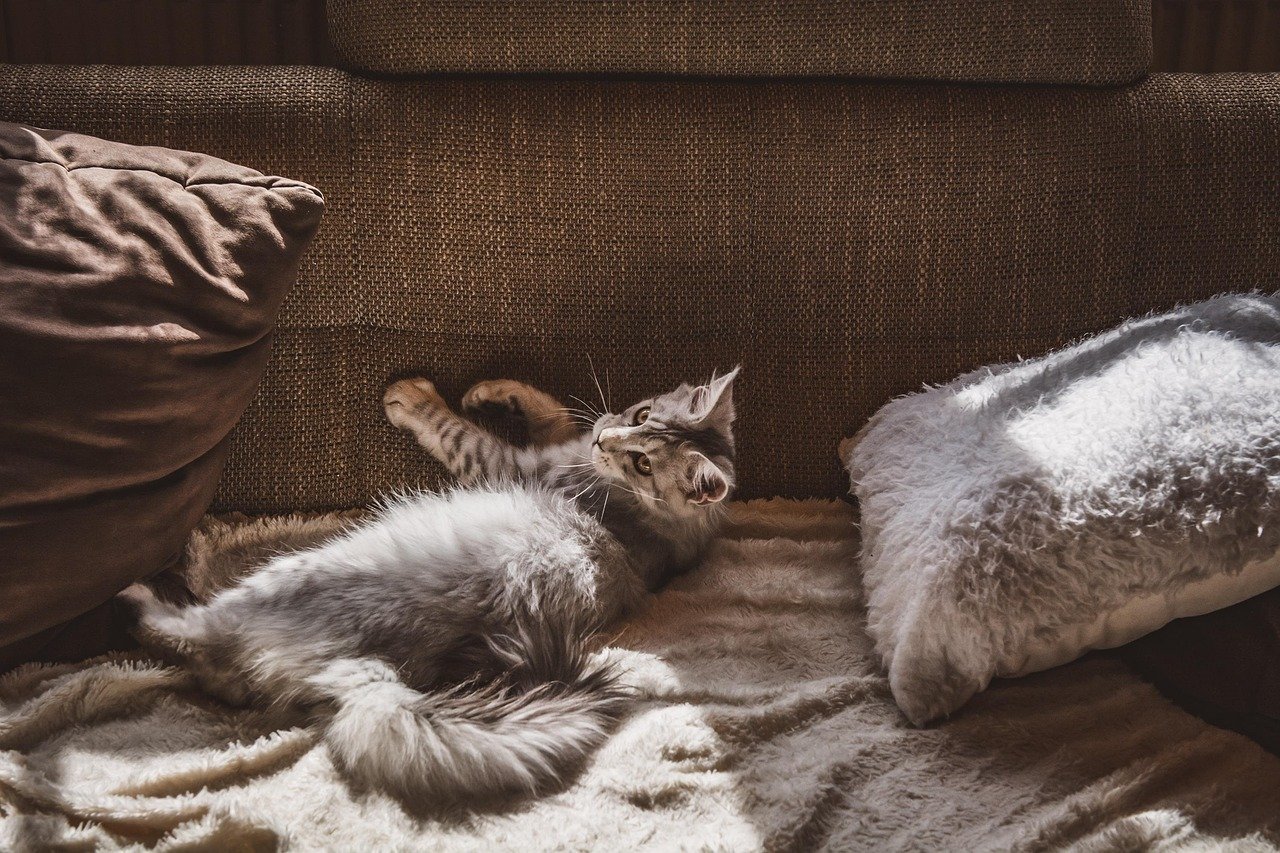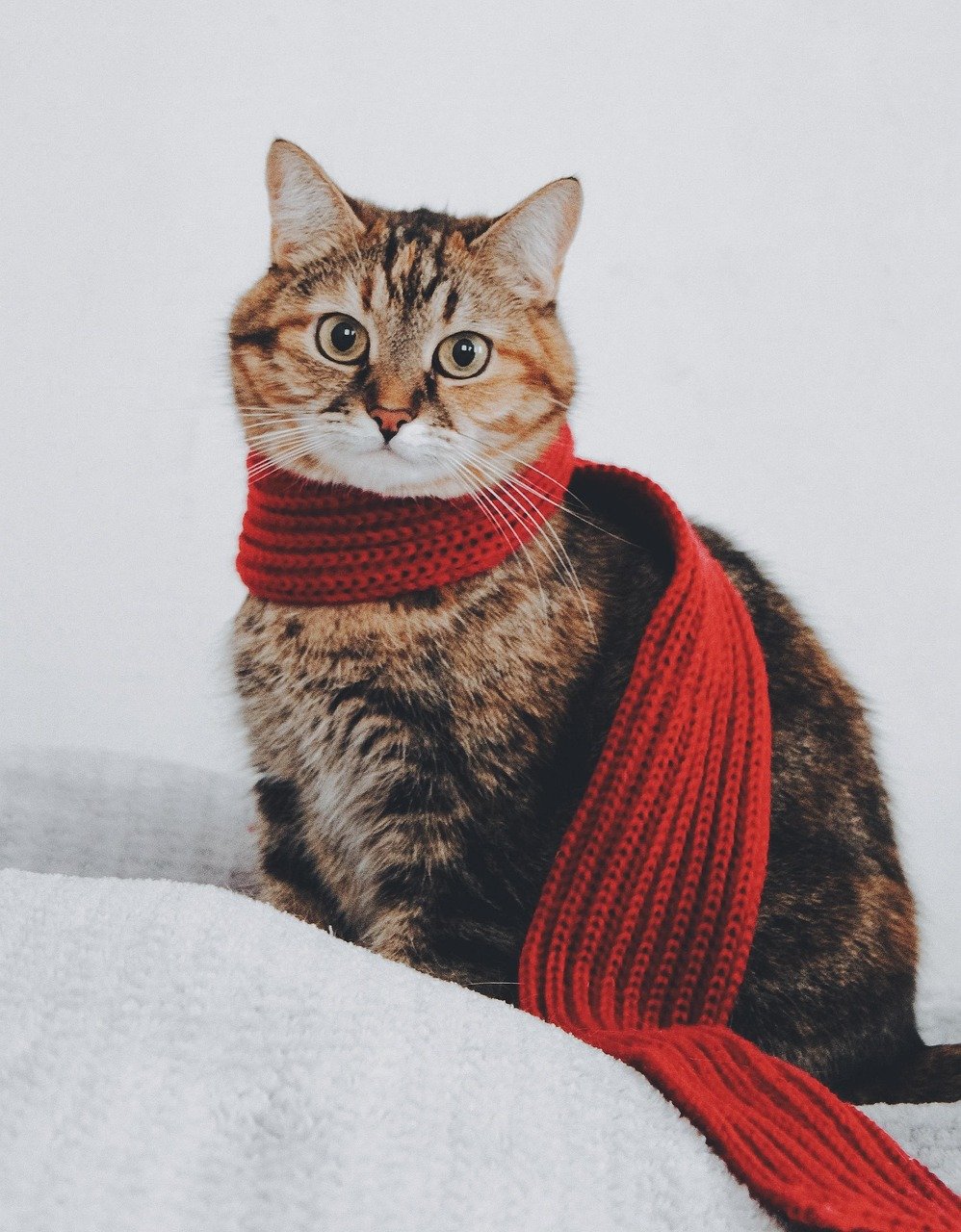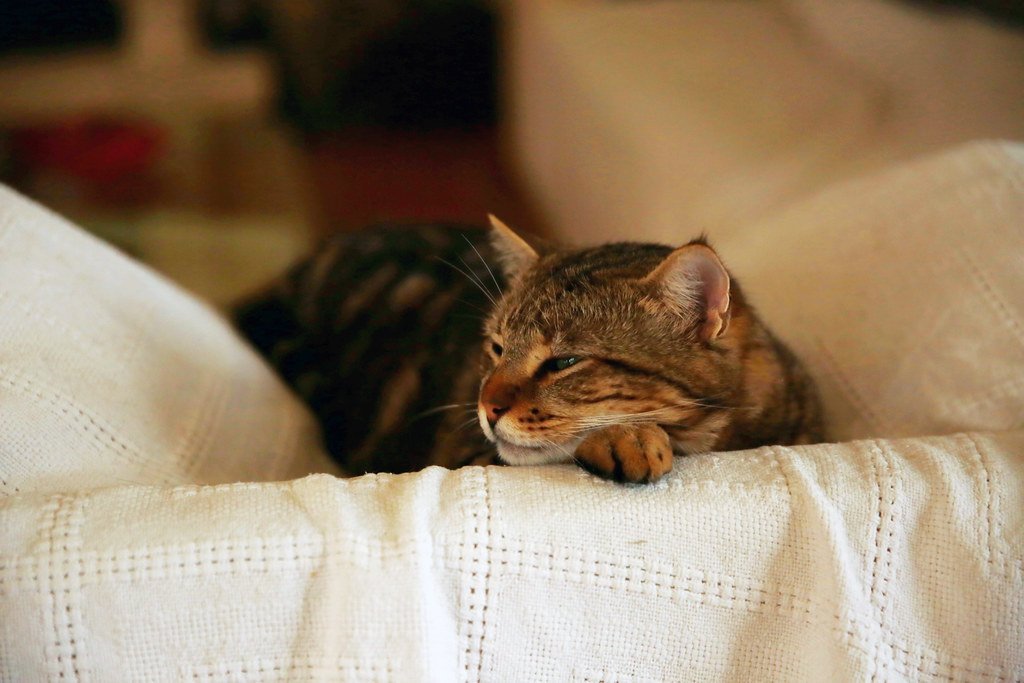Vertical Territory is Everything

Cats naturally love high places because it makes them feel safe and in control. In a small apartment, going up instead of out is your secret weapon. Install wall-mounted shelves, cat trees that reach the ceiling, or even floating bridges between furniture pieces. Your cat will feel like they own a mansion even in a studio apartment. Think of it as creating a cat highway system throughout your home. The higher your feline can perch, the more secure and content they’ll be.
Window Perches Work Magic

A simple window perch can transform your cat’s entire day from boring to absolutely thrilling. These suction-cup platforms give your kitty front-row seats to the greatest show on earth – the outside world. Birds, squirrels, passing dogs, and neighborhood drama become their personal entertainment system. It’s like having cable TV specifically designed for cats. Even the tiniest studio becomes exciting when your cat has a dedicated lookout post. Position it at their favorite window and watch them spend hours there.
Hide Food Around the Apartment

Turn mealtime into a treasure hunt by hiding small portions of kibble in different spots around your space. This mimics how cats would naturally hunt for food in the wild and keeps their minds sharp. Use puzzle feeders, treat balls, or simply scatter dry food under furniture and in corners. Your apartment becomes an adventure zone instead of just four walls. This technique prevents boredom eating and helps maintain a healthy weight too. Even lazy indoor cats will start moving more when dinner requires a little detective work.
Create Cozy Hiding Spots

Every cat needs secret hideaways where they can disappear and recharge their social batteries. Cardboard boxes work perfectly, but you can also use fabric cubes, under-bed storage boxes, or even repurpose old furniture. Place these retreats in quiet corners away from foot traffic and household noise. Think of them as your cat’s personal panic rooms where they can escape when overwhelmed. Having multiple hiding spots gives your feline choices and control over their environment. The smaller your apartment, the more important these private spaces become.
Scratching Posts Save Your Security Deposit

Multiple scratching surfaces throughout your apartment will save your furniture and keep your cat’s claws healthy. Place tall posts near their favorite napping spots and horizontal scratchers near doorways. Cats scratch to mark territory and stretch their muscles, so they need options in different areas. Sisal, cardboard, and carpet textures all appeal to different preferences – some cats are picky about their scratching surfaces. Position these strategically and your sofa stays intact while your cat stays happy.
Rotate Toys to Keep Things Fresh

Instead of leaving all toys out at once, keep some stored away and rotate them weekly. This simple trick makes old toys feel new again and prevents your cat from getting bored. Store half the toys in a closet while the other half stays accessible for play. When you swap them out, it’s like Christmas morning for your feline friend. This method works especially well in small spaces where too many toys can create clutter. Your cat will be more engaged with fewer toys that change regularly than with a pile that never varies.
Use Every Nook and Cranny

Small spaces have hidden potential if you look closely enough for cat-friendly opportunities. The space under your bed can become a tunnel system with strategically placed openings. Top of the refrigerator makes an excellent perch with a small cushion added. Behind the couch might be perfect for a litter box if ventilation is good. Even bathroom counters can double as resting spots when not in use. Think like a cat and see potential in every corner, shelf, and unused vertical space.
Establish Clear Zones

Divide your small apartment into distinct areas for eating, sleeping, playing, and bathroom needs. This helps your cat feel organized and secure even in tight quarters. Keep the litter box far from food bowls, create a dedicated play area near windows, and establish quiet sleeping zones away from high-traffic areas. Clear boundaries help reduce stress and make your space feel larger than it actually is. Even in a studio, you can create invisible zones that give structure to your cat’s daily routine.
Interactive Play Sessions Matter More

When space is limited, quality playtime becomes absolutely crucial for your cat’s physical and mental health. Fifteen minutes of intense interactive play with a feather wand or laser pointer can tire out your cat more than hours of solo toy batting. Schedule these sessions right before meals to mimic natural hunting patterns. Your small apartment won’t feel restrictive if your cat gets proper exercise and stimulation. Make it a daily routine and watch your feline become calmer and more content overall.
Smart Litter Box Placement

Finding the perfect litter box spot in a small apartment requires creativity and strategic thinking. Avoid placing it near food, in high-traffic areas, or anywhere that feels trapped or cornered. Consider under-sink cabinets with doors removed, behind a folding screen, or in a well-ventilated closet with the door always open. Some apartment dwellers successfully use bathroom corners or even balconies if weather permits. The key is ensuring privacy while maintaining easy access for both cleaning and use.
Plants That Purify Air (And Are Cat-Safe)

Small apartments can feel stuffy, but adding cat-safe plants improves air quality while giving your feline something interesting to investigate. Spider plants, Boston ferns, and cat grass are perfect choices that won’t harm your curious kitty. These plants also add natural elements that make cramped spaces feel more alive and vibrant. Position them on high shelves or in hanging planters if your cat likes to nibble. Fresh air and greenery benefit both you and your feline companion in close quarters.
Noise Management for Sensitive Ears

Apartment living often means dealing with neighbors, traffic, and other sounds that can stress sensitive cats. Create quiet zones using soft furnishings, rugs, and even white noise machines or calming music. Heavy curtains help muffle outside noise while providing cozy hiding spots behind them. Some cats adapt quickly to apartment sounds, while others need extra help feeling secure. Pay attention to your cat’s reactions and adjust accordingly – a stressed cat in a small space can develop behavioral problems quickly.
Multi-Purpose Furniture is Your Friend

Choose furniture that serves both human and feline needs to maximize your limited space effectively. Ottoman storage cubes can hide cat supplies while providing seating and elevated perches. Bookshelves become climbing structures when secured properly to walls. Coffee tables with lower shelves create tunnels and hiding spots underneath. Cat trees that double as room dividers help separate spaces while giving your kitty vertical territory. Every piece of furniture should ideally serve multiple purposes in a cat-friendly small apartment.
Keep Emergency Supplies Organized

Small spaces require smart storage solutions for cat supplies, especially emergency items you hope never to need. Keep a first-aid kit, extra litter, backup food, and carrier easily accessible but out of daily sight. Use under-bed storage, high closet shelves, or vacuum-sealed bags to maximize space efficiency. Having supplies organized and ready reduces stress during unexpected situations like illness or evacuation. A well-prepared cat parent can handle emergencies smoothly even in the tightest living quarters.
Temperature Control for Comfort

Small apartments can get hot quickly, and cats are sensitive to temperature changes throughout the seasons. Provide cool spots like bathroom tiles for summer and warm areas like sunny windows or heating vents for winter. Elevated beds get better air circulation, while floor-level spots stay cooler during heat waves. Consider the sun’s path through your windows when arranging cat furniture – that sunny morning spot might be too hot by afternoon. Your cat will seek out comfortable temperatures naturally if you provide options.
Routine Creates Security in Small Spaces

When living space is limited, a predictable daily routine becomes even more important for your cat’s emotional well-being. Feed at the same times, play at consistent intervals, and maintain regular bedtime patterns. This structure helps your cat feel secure and reduces anxiety that can develop in confined spaces. Cats are creatures of habit, and knowing what to expect helps them relax completely. A stressed cat in a small apartment can become destructive, while a content cat adapts beautifully to cozy living.
Did you realize how much adventure and comfort you can pack into even the tiniest apartment with just a little creative thinking?
Hi, I’m Bola, a passionate writer and creative strategist with a knack for crafting compelling content that educates, inspires, and connects. Over the years, I’ve honed my skills across various writing fields, including content creation, copywriting, online course development, and video scriptwriting.
When I’m not at my desk, you’ll find me exploring new ideas, reading books, or brainstorming creative ways to solve challenges. I believe that words have the power to transform, and I’m here to help you leverage that power for success.
Thanks for stopping by, Keep coming to this website to checkout new articles form me. You’d always love it!






